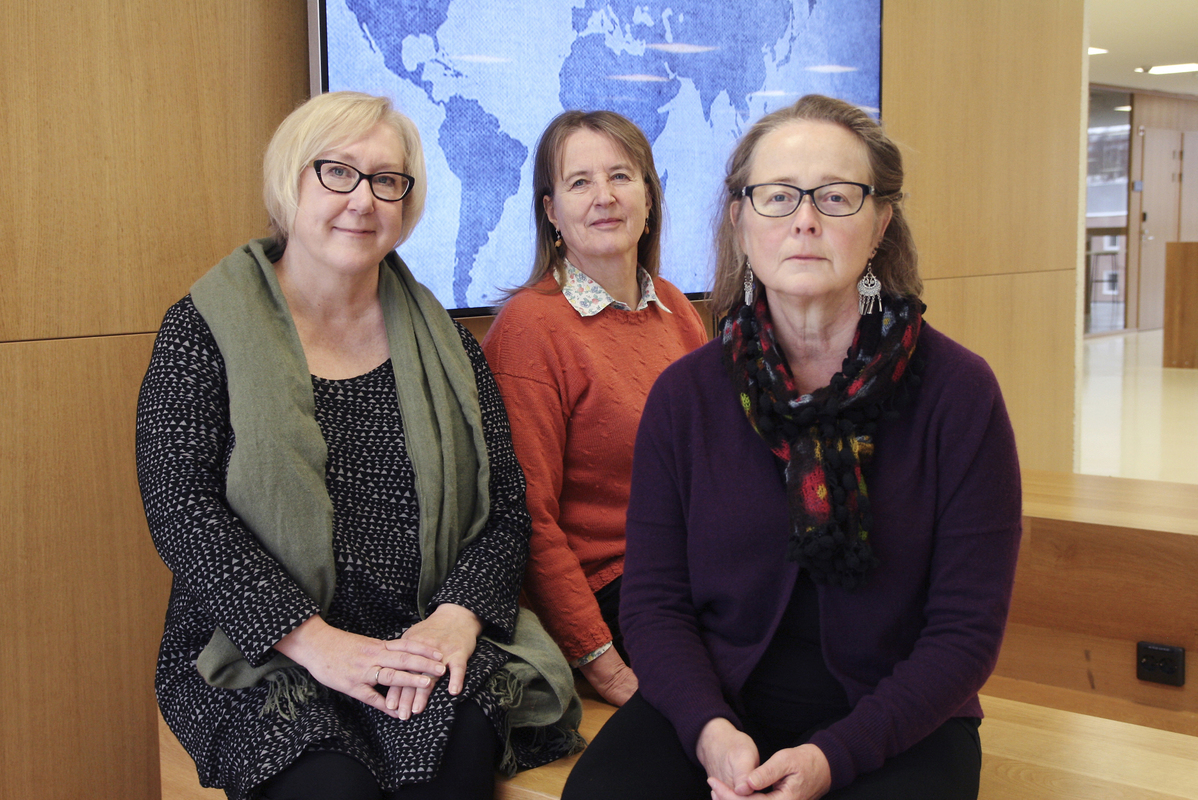Young people’s Finnish identity
Young people's Finnish identity is open and international in the world of mobility
 Finnish identity among today’s young people is more diverse than in previous generations. Mobility and internationalisation are reflected in how the young people define their Finnish identity. An increasing number of families are multicultural, and children identify themselves also with their parents’ cultural and national background other than the traditional Finnish one. There are thus many ways to be and live in Finland. This diversity brings challenges to school’s traditional mission of citizenship education: to support students’ national identification and growth as a citizen in the modern world.
Finnish identity among today’s young people is more diverse than in previous generations. Mobility and internationalisation are reflected in how the young people define their Finnish identity. An increasing number of families are multicultural, and children identify themselves also with their parents’ cultural and national background other than the traditional Finnish one. There are thus many ways to be and live in Finland. This diversity brings challenges to school’s traditional mission of citizenship education: to support students’ national identification and growth as a citizen in the modern world.
The EU provides benefits for citizens, contacts and connections are available globally
In the young people’s group discussions (2014) European identity was not brought up as a target of cultural identification comparable to nationality. Membership in the European community was defined through the European Union. EU citizenship bears an instrumental value to the teenagers along with the common currency, traveling or wider study options. The development and deepening of transnational identification may be slow. It has been considered to require shared cultural traditions and symbols as well as cross-generational experiences that strengthen the sense of community.
Global orientation came clearly up in the school students’ discussions. As a target of identification, also global citizenship was mentioned in these discussions. Mobility and travelling have broadened teenagers’ experiences of cultural diversity and also built cultural bridges. Information and communication technologies fade off geographical distances and enable teenagers’ mutual contacts even from far away as part of their daily life.
Equity education is needed at schools
The current curricula encourage to global citizenship in consistence with the developmental objectives of the United Nations. The related values include cultural diversity, respect for others, and membership in the shared world. Global citizenship and growing towards it may be challenging, however, considering the current phenomena of disintegration and nationalism.
In an increasingly diversified society, group-centricity brings about exclusion and separation, and consequently also contradictions with regard to national identification. Hence, teachers play a pedagogically and socially important role in recognising and taking into account differences in school students' views and experiences. Young people’s individual paths call for sensitivity from the teacher to give adequate space and support to each student in their identity construction regarding nationality.
Basic education aims at promoting the well-being of all students as well as democracy and active agency. Participation and influence can be practised and strengthened in multidisciplinary phenomenon-based learning, for example. Students’ own experiences and different opinions can come up and be encountered in discussions if the atmosphere is emotionally safe. Also prejudice and experiences of discrimination should be discussed openly. Schools with an international operation principle have dealt with racist attitudes, and according to student experiences there is less discrimination in these schools than in the ordinary schools.
Human rights are an example of current learning topics that may appear in varied ways from the perspective of students with different backgrounds. Students’ own experiences may render the implementation of human rights into individual and practical issues, the solving of which is part of their life management. In such instances mere general level discussion about human rights is not sufficient.
Many teachers may be inexperienced for dealing with and considering equity issues at school. On the other hand, several NGOs have necessary expertise and it has also been already utilised to some extent at schools and in teacher training.
The research project “Young Europeans´ Constructions of Identity and Citizenship in Europe” has provided information about national identification among urban youth. Young people of secondary and upper secondary school age in three cities had small-group discussions about their identity, what it means to be a Finn and a European, and about Europe in general.Leena Lestinen, Marjo Autio-Hiltunen, Ulla Kiviniemi
 Leena Lestinen works as senior researcher at the Finnish Institute for Educational Research, University of Jyväskylä. She has studied intercultural issues as well as citizenship and democracy education in school settings. She is interested in global dimension of education at local settings.
Leena Lestinen works as senior researcher at the Finnish Institute for Educational Research, University of Jyväskylä. She has studied intercultural issues as well as citizenship and democracy education in school settings. She is interested in global dimension of education at local settings.Ulla Kiviniemi works as a Lecturer of Craft at the Department of Teacher Education, University of Jyväskylä. In the field of craft education, she has recently focused on the essence and methods of multimaterial handi craft.
Marjo Autio-Hiltunen works as a Lecturer of Visual Arts at the Department of Teacher Education, University of Jyväskylä. She is involved in UNESCO’s ASP school network, engaged especially in the world heritage sites.
Leena, Ulla and Marjo are engaged in the Citizenship and Democracy Education Team at the University of Jyväskylä. They have participated in international collaboration within the CiCe network (Children´s Identity and Citizenship in Europe), under the Erasmus Academic Network.
Feedback to the authors: leena.lestinen@jyu.fi
Main image: adapted from a iClipart picture by Martti Minkkinen, photo of the authors: Martti Minkkinen
Previous | Next | To Front Page